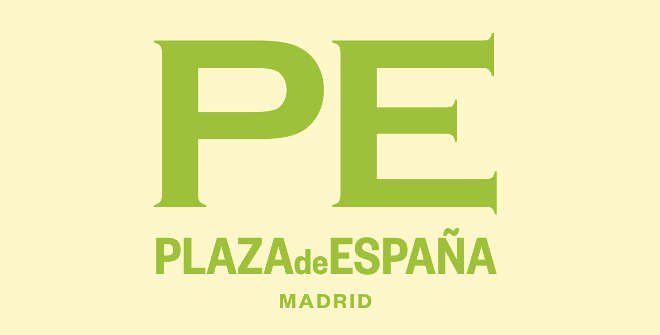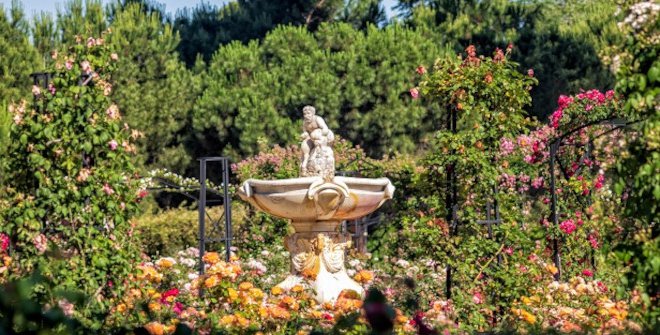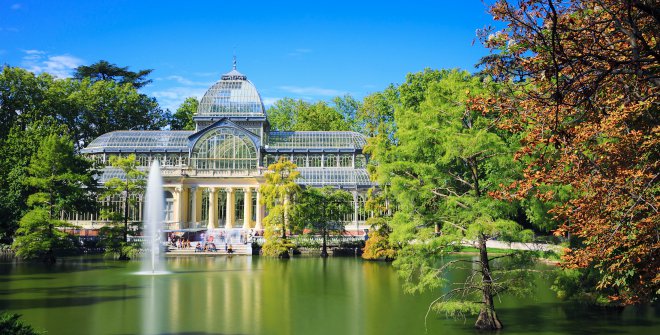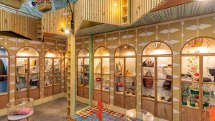The new Plaza de España
The new Plaza de España is here. Two and a half years after its refurbishment began, this unique space has been revamped and is glorious. It is now being opened to the public, enabling residents of Madrid and visitors to reach the Palacio Real, the Almudena Cathedral, the Sabatini Gardens and the Temple of Debod without coming across a single vehicle or passing a zebra crossing.
22 November 2021 is a date that will go down in the history of the Plaza de España, marking a before and an after. This complex remodelling project has brought to light numerous archaeological remains, but at first sight, residents of Madrid will be able to see the palaces, churches, senior government institutions and green spaces in the surrounding area. The pedestrian area that has been created extends from Calle de Bailén on the corner of Calle Mayor to Calle de Ferraz. It is the natural continuation of the pedestrian area in Plaza de Oriente.
Pedestrians at the forefront
Therefore, the pedestrian is at the forefront of the revamped Plaza de España, with an additional 70,000 square metres around the central square which is home to the famous Monument to Cervantes, and where there are also children’s play areas. Road traffic has disappeared as it has been diverted underground thanks to a large tunnel spanning more than one kilometre that links Calle de Bailén with Calle de Ferraz.
Cyclists can also lay claim to the new square, as it has two long cycleways: from north-south, linking Calle de Bailén and Calle de Ferraz, and from east-west, connecting Cuesta de San Vicente to the Gran Vía. These two routes are joined by a third which runs between Calle Princesa and Calle de Ferraz.
Furthermore, the square boasts three large fountains, two of which already existed and a new one, the Fuente del Cielo, made out of makauba marble and inspired by the Madrid sky.
More than 1,200 trees and a new tunnel
More than 1,200 trees have been planted all around Plaza de España, which join and connect different green spaces, such as the Sabatini Gardens to the south, the Casa de Campo, the Campo del Moro and Madrid Río to the west, and the Temple of Debod and the Western Park, to the north. The aim is to make the Bailén-Ferraz intersection pedestrian friendly so as to move easily around the different historical, cultural and heritage sites that were dispersed.
The new tunnel, designed to take road traffic underground is the continuation of the one that was built in front of the Palacio Real in the 1990s and which has been totally renovated in terms of lighting, ventilation, safety, etc. In total, it is 1,150 metres long with two lanes in each direction between Calle de Ventura Rodríguez and Calle Luisa Fernanda, in the Moncloa-Aravaca district. Indeed, the crossroads that linked Cuesta de San Vicente to the Gran Vía has been kept but is hidden underground and cannot be accessed by pedestrians.
Remains of Godoy Palace
During the construction work, there were surprises, as the technicians came across remains of the Godoy Palace, a construction that is adjacent to the Senate and which was partly pulled down in the 1930s, leaving the basements and vaults intact, which were designed in the 18th century by Sabatini.
This finding forced the way in which the works were carried out to be modified, carrying them out practically by hand in order to safeguard the remains of Godoy Palace. A wall with arches was also discovered during the works, which had to be brought to the surface, corresponding to the former San Gil Barracks, along with several buttresses of the Sabatini Gardens.
From Bailén to Ferraz without traffic
The new Plaza de España not only joins such unique spaces as the Palacio Real, the Sabatini Gardens (which will remain closed for refurbishment for some months), the Campo del Moro, Madrid Río or the Gran Vía in a single section and on the same level, but also integrates the archaeological remains that were discovered during the works. Therefore, it will be possible to visit the two floors of the Godoy Palace, part of the former Royal Stables, the Sabatini Gardens and the remains of the path of the former San Gil Barracks, located in Calle Ferraz. To make things easier for visitors, an archaeological route has been designed and an interpretation centre has been set up for this monumental area of the city.







